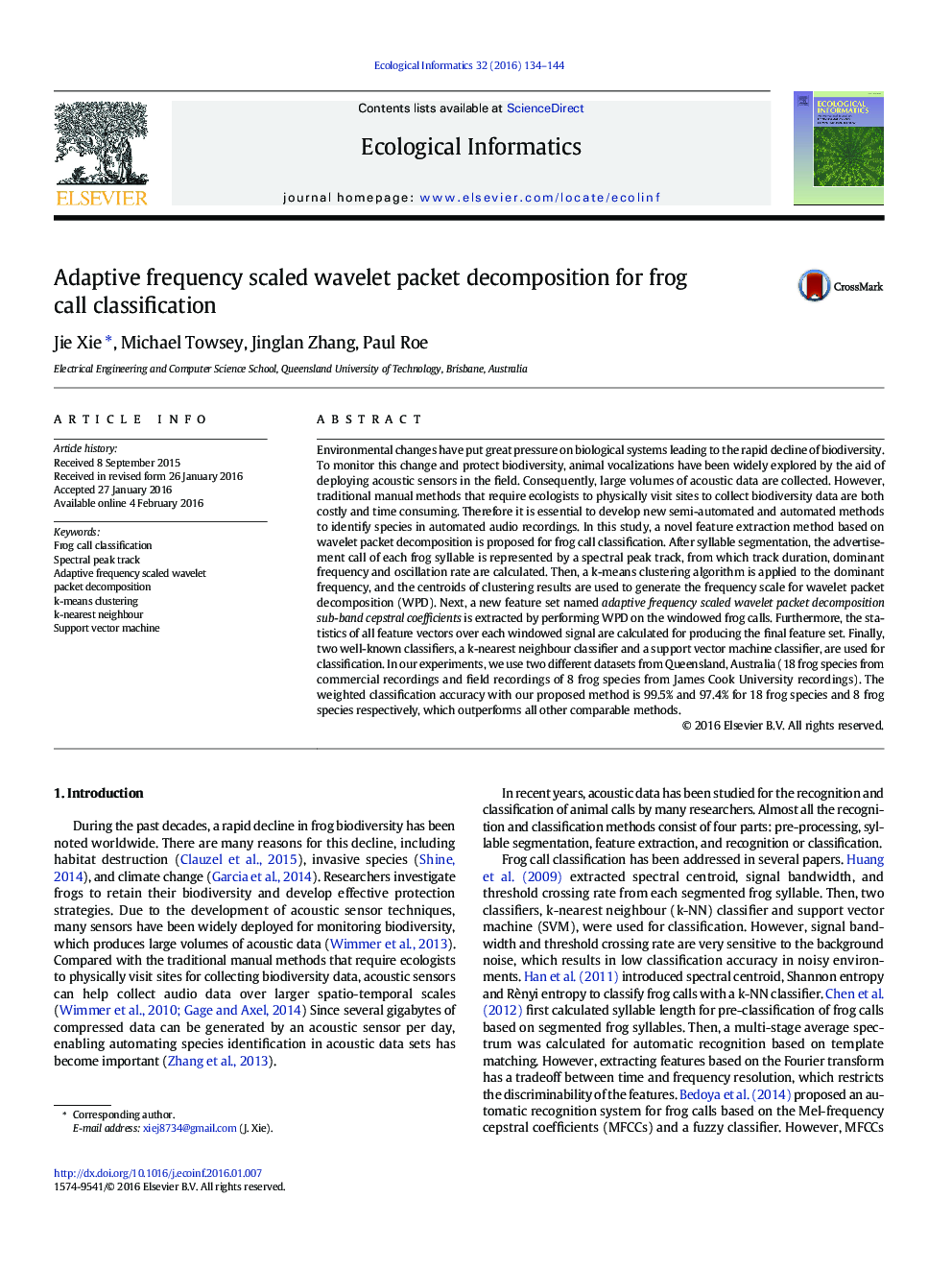| کد مقاله | کد نشریه | سال انتشار | مقاله انگلیسی | نسخه تمام متن |
|---|---|---|---|---|
| 6295850 | 1617202 | 2016 | 11 صفحه PDF | دانلود رایگان |
عنوان انگلیسی مقاله ISI
Adaptive frequency scaled wavelet packet decomposition for frog call classification
ترجمه فارسی عنوان
فرکانس انطباق تقسیم بسته های موجک مقیاس برای طبقه بندی تماس قورباغه
دانلود مقاله + سفارش ترجمه
دانلود مقاله ISI انگلیسی
رایگان برای ایرانیان
کلمات کلیدی
موضوعات مرتبط
علوم زیستی و بیوفناوری
علوم کشاورزی و بیولوژیک
بوم شناسی، تکامل، رفتار و سامانه شناسی
چکیده انگلیسی
Environmental changes have put great pressure on biological systems leading to the rapid decline of biodiversity. To monitor this change and protect biodiversity, animal vocalizations have been widely explored by the aid of deploying acoustic sensors in the field. Consequently, large volumes of acoustic data are collected. However, traditional manual methods that require ecologists to physically visit sites to collect biodiversity data are both costly and time consuming. Therefore it is essential to develop new semi-automated and automated methods to identify species in automated audio recordings. In this study, a novel feature extraction method based on wavelet packet decomposition is proposed for frog call classification. After syllable segmentation, the advertisement call of each frog syllable is represented by a spectral peak track, from which track duration, dominant frequency and oscillation rate are calculated. Then, a k-means clustering algorithm is applied to the dominant frequency, and the centroids of clustering results are used to generate the frequency scale for wavelet packet decomposition (WPD). Next, a new feature set named adaptive frequency scaled wavelet packet decomposition sub-band cepstral coefficients is extracted by performing WPD on the windowed frog calls. Furthermore, the statistics of all feature vectors over each windowed signal are calculated for producing the final feature set. Finally, two well-known classifiers, a k-nearest neighbour classifier and a support vector machine classifier, are used for classification. In our experiments, we use two different datasets from Queensland, Australia (18 frog species from commercial recordings and field recordings of 8 frog species from James Cook University recordings). The weighted classification accuracy with our proposed method is 99.5% and 97.4% for 18 frog species and 8 frog species respectively, which outperforms all other comparable methods.
ناشر
Database: Elsevier - ScienceDirect (ساینس دایرکت)
Journal: Ecological Informatics - Volume 32, March 2016, Pages 134-144
Journal: Ecological Informatics - Volume 32, March 2016, Pages 134-144
نویسندگان
Jie Xie, Michael Towsey, Jinglan Zhang, Paul Roe,
